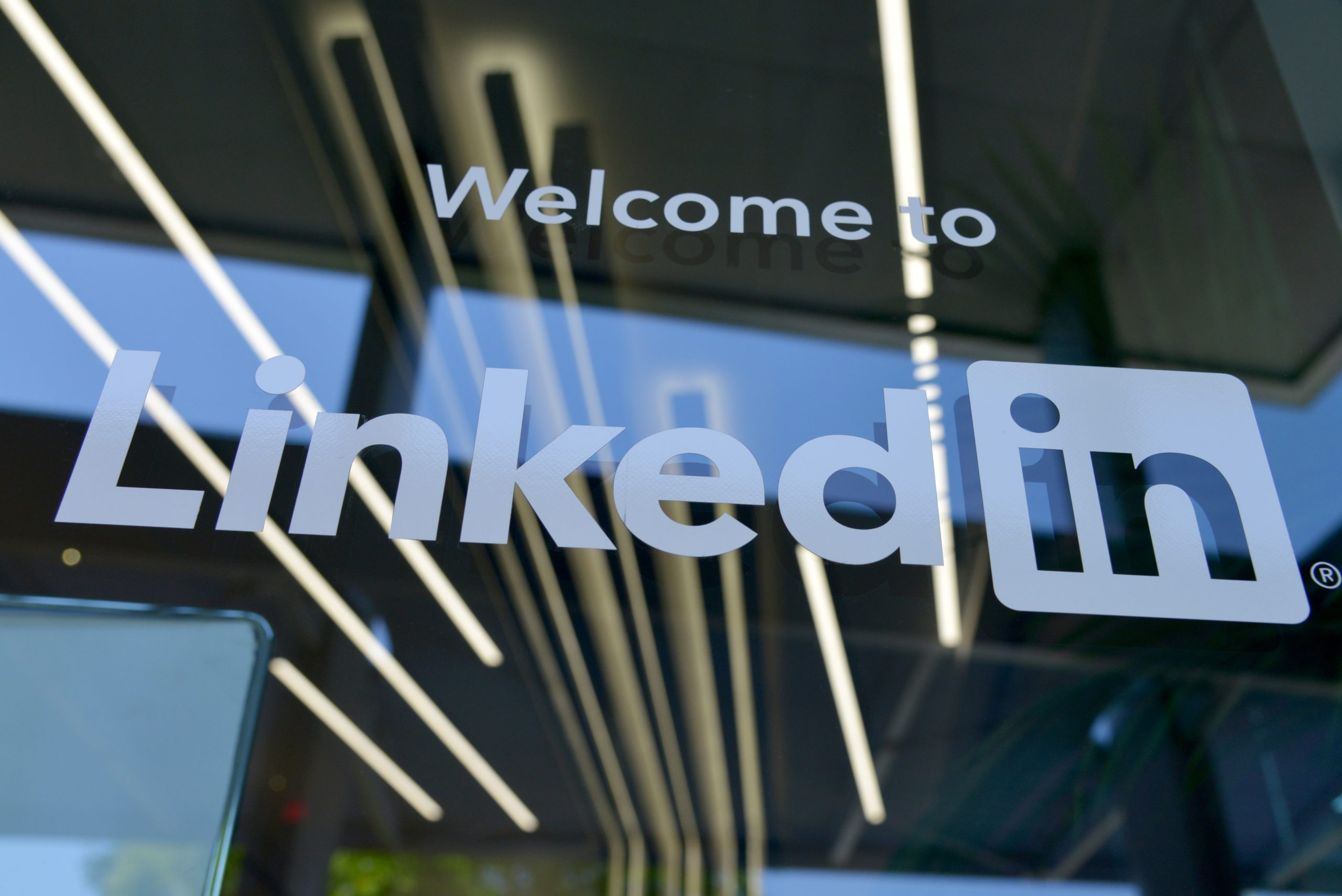Sales reps consider LinkedIn as one of their best friends when it comes to increasing close rates. They use it to prospect, qualify, and close business. But how do they increase their LinkedIn close rate?
65% of B2B companies say they have won a customer through LinkedIn, and 3 out of 4 B2B buyers use social media to make buying decisions.
Over 500 million people use LinkedIn worldwide, and they have over 1 billion connections between them. It’s no wonder it’s one of the most powerful social media platforms on the market.
But what separates LinkedIn from the rest of the social media pack?
Simple answer: its focus is on B2B and professional relationships.
It’s no longer a question of whether sales teams should use LinkedIn to close more deals. The question is how sales teams should use LinkedIn to close more deals.
We’ve put together the ultimate guide on what you need to be doing if you want to increase your LinkedIn close rate.
We’ll be looking at:
- Your LinkedIn goals and objectives
- The 7 steps to increasing your LinkedIn close rate
- How to profile your prospects
- Making sure you have connections in common
- How to look for common interests with your target audience
- Using LinkedIn automation to win more leads
- The perfect LinkedIn message structure
- How to increase your LinkedIn closing ratio by tracking activity
- Closing the deal by setting up meetings
- A quick look at LinkedIn Ads
Let’s go!
What are your LinkedIn close rate conversion goals?
For years, marketing outreach has become one of the most effective ways for businesses to promote themselves and get leads. Due to its popularity, LinkedIn has become a crucial platform for B2B and B2C companies to reach out to potential business partners and customers.
Specialists can communicate, share insights, and seek business solutions, all on LinkedIn.
So if you want to do cold outreach, develop your business, or boost your LinkedIn close rate strategy, you first need to make sure you:
- Look credible by optimising your profile or page to present you, your product, and your operation.
- Show your expertise, proving that you can provide solutions, insights, and recommendations.
- Use LinkedIn automation software to maximise reach and efficiency.
Before you even think about sending out a bunch of messages and connection requests to your target audience, you also need to take some time to focus on what your conversion goals are.
It’s not always about sales when it comes to conversions on LinkedIn. You can earn different types of conversions, like:
- Completing forms
- Downloading content
- Registering for events
Knowing your goal will help you to craft the message you want to send, or set up the ad that would work best for you.
We’ll get to LinkedIn Ads later on, but for now we are going to focus on perfecting an outreach campaign that will convert your leads into paying customers.
How to increase your LinkedIn close rate
Now to the good stuff.
Let’s find out how you’ll actually improve that conversion rate on LinkedIn when sending cold messages to prospects.
1. Profile your prospects
Besides providing tons of useful insights that can be used to navigate the conversation once you get a foot in the door, LinkedIn also sends the prospect a notification that you visited their profile.
Prospects who don’t know you may feel more comfortable with your first message if they see your name and face in this notification.
You want LinkedIn to notify your prospect that you’ve been looking at their profile. Put yourself on their radar by using this notification.
2. Make sure you have common connections
A survey of B2B buyers and influencers found that only 4% of respondents were positive about a salesperson who contacted cold, but 87% were positive about one they knew.
In B2B, buyers place a great deal of value on the opinions of their peers and are much more likely to trust someone they know.
If you don’t have a lot of connections, or if your connections aren’t in the right field that you are trying to sell to, you’re going to have issues with your LinkedIn close rate.
Spending loads of time sending connection requests wastes everyone’s time, so automate this process using a LinkedIn automation tool.
LinkedIn automation platforms automate your outreach activities, like expanding your professional network, without looking spammy.
Start by creating your target list in LinkedIn. Search for the job title of the prospects you want to target, and narrow it down using filters:
Once you’ve created your ideal connections list, grab the URL of the search from LinkedIn and create a campaign in Salesloop to automate your connection requests. A job that takes hours will be done in minutes.
3. Look for a common interest
Find common ground with your prospects as you review their profiles on LinkedIn.
Try narrowing down your prospect list to companies or people who are potentially interested in what you’re selling. It will allow you to devote more time to researching each prospect and crafting a message that will get a response.
One way to do this is by using tools like Leadfeeder or VisitorQueue, which reveal companies visiting your website. You won’t get a contact email address, but you can use these tools to create lists of buying personas and then craft personalised message sequences for each one.
A LinkedIn automation tool like Salesloop, which integrates with Leadfeeder and VisitorQueue, will then allow you to add both general and specific personalisation variables and message the entire group with a single click:
Using Salesloop’s integration with Leadfeeder means you can identify and target contacts from companies who visited your website
Look at the content they share and engage with as well: if they share content from the same sources you do or follow a topic you follow, that could be enough to get a conversation started.
4. Use automation to raise that LinkedIn close rate
Using automation will save you time and allow you to connect more effectively with your prospects. But loading a Sales Navigator list into your automation tool will not be enough.
Instead, use Salesloop to build your list and then add several layers of personalisation:
- Segment your target audience based on demographic and intent data
- Build messaging per each segment
- Add a specific opening line or paragraph tailored to the specific prospect or company
The personalisation feature in Salesloop means you can send targeted messaging to different audience segments
Even after personalisation, it’s very likely that there will be repetitive parts in your connection requests, and that’s completely fine. As a rule of thumb, you might aim to keep about 10-20% of your message personalised.
5. Don’t overdo your message
Don’t ramble on and on about things that don’t matter when you’re finally ready to send the first message to a prospect.
The key here is to personalise your outreach.
Instead of focusing on your features, integrations, awards or case studies, focus on a specific problem they’re likely facing.
Talk about their professional interests, awards, achievements, or job history – but make sure you touch on that pain point without pushing a hard sell.
Keep your first message to five sentences max and go with the following rough template:
- Lead with a shared event, group, or interest
- Give a genuine compliment
- Have a conversation, don’t sell
You might run a list from LinkedIn of people in a certain group, which indicates that they are aligned to the same ideas about a topic. Your message in your Salesloop campaign could say something like this:
Notice it’s not a direct sell, but starts a conversation with the prospect. When people realise they are being pitched to, they often disengage.
Make sure to build a connection with the person you’re prospecting, and pitch them only when you know your product or service could solve their pain point.
Loads more tips on how to do this here:
How to Personalise Your LinkedIn Outreach and Stop Spamming People
6. Increase your LinkedIn close rate by tracking activity
Tracking user activity, both on the prospect and sales side, is another way to increase your closing ratio.
If you can clearly see that a lead is engaging with your business, based on how much time they spend on your web pages or how often they download content from your website, then you’ll know this is a lead you should be working on.
Once you have a lot of leads like this that you can track, it’s only a matter of time before you can convert them and increase your closing rate.
Salespeople should also track everything they do on the sales side.
They should track every call, email, follow-up, meeting, etc. so that you know what your sales teams is doing at every step. Tracking your sales activities will help you identify any balls that have been dropped.
7. Close the deal by setting up meetings
You can close deals in a variety of ways. Setting up a one-on-one meeting with a high-ranking lead is one of the most popular, and effective, ways to do it.
You can demo your products during a meeting and answer any questions they have. A meeting is also the ideal time to offer a potential customer something of value that they wouldn’t get by just clicking a link on your website.
Ultimately, a meeting tells a prospect that you are a brand they can trust. And they’ll not be able to help themselves but buy from you.
Maybe not quite like that, Tom…
A quick look at LinkedIn Ads
With LinkedIn Ads, you can access LinkedIn social networks through sponsored posts. As well as building leads, online recognition, and sharing content, they can be a powerful marketing tool for B2B companies.
Building a brand online is an important marketing strategy, and professional brands can be built online with LinkedIn Ads if you know what you’re doing.
If LinkedIn visibility is optimised correctly, marketing spend will be lower, or advertising can be scaled profitably. You’ll improve your search ranking on Google as people start researching your brand and the content you have created just by being present on LinkedIn, for example.
The conversion rate for lead generation forms is 13%, which is five times higher than the conversion rate for landing pages, according to LinkedIn.
Now over to you
Typical B2B purchase decisions involve LinkedIn heavily, and you need to make sure you are a part of that pie.
Prospects don’t want multi-paragraph messages from salespeople they have never met. By making the conversation about them, you will find your common ground and start the discussion.
And the best part? You can still make the conversation about them, and make it feel personal, by automating your outreach campaign the smart way.
So to recap: to increase your LinkedIn close rate, there are seven things you need to do:
- Profile those prospects
- Have connections in common
- Look for common interests with your target audience
- Use LinkedIn automation to win more leads
- Write a message that isn’t spammy
- Track your activity
- Close the deal by setting up meetings
By using these tips, and a strong LinkedIn automation tool like Salesloop, you’ll be closing more deals in no time.
Get it done with Salesloop.io
Salesloop allows salespeople and recruiters to source new leads directly from Linkedin.
Just search for the people you’d like to reach, add them to a campaign, and Salesloop will do the rest.
There’s a 14-day free trial, so you can see for yourself how easy it is to do effective, personalised LinkedIn outreach at scale.
If you need a tool that can support true personalisation and not just canned messages with [job title] tokens, check out Salesloop today – it’s 100% free to start.





